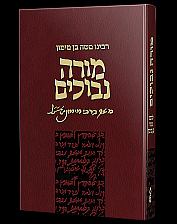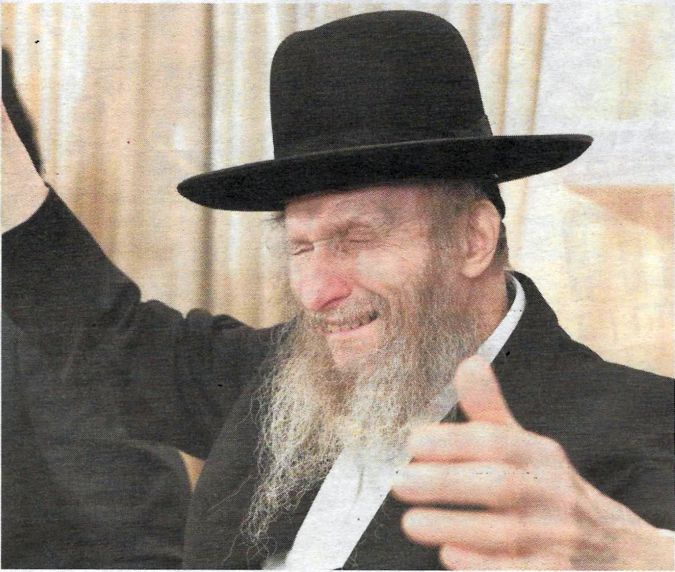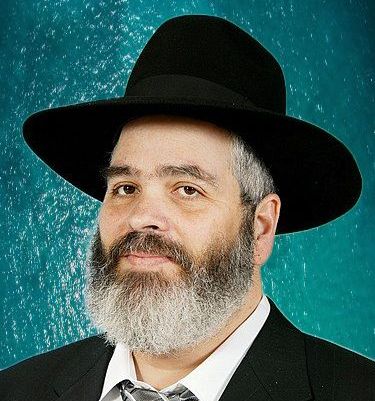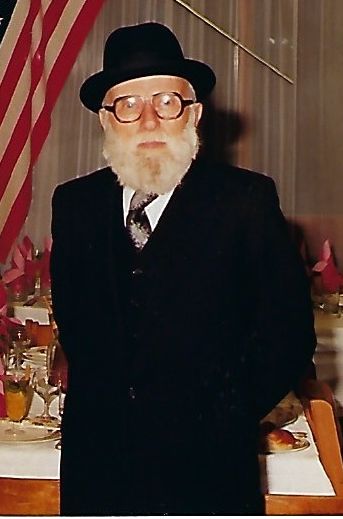  |
|
| |||||
The next scheduled issue is for Parshas Shofteim.
This Google Custom Search looks only in this website. HaRav Don Segal Comments on the Tragedies of Bein Hazmanim
This period of bein hazmanim, when Torah study is decreased alongside with a lessening of merit, is a dangerous one, as the Rosh Hayeshiva HaRav Edelstein warned in his letter. These are times when the Measure of Judgment was activated and Yerushalayim raised its wail over the loss of members of the finest families as sacrifices for the public, bikrovai Ekodesh, times when tragic misfortunes befall the Jewish people.
We asked the Mashgiach, HaRav Don Segal, what Heaven seeks to arouse in us in these troubled times. We begged him to show us how to knock upon the chambers of the heart and hear words to show us the proper way so that we can fortify ourselves spiritually in light of the terrible misfortunes and tragedies which claimed the lives of the elite sons and daughters of the Torah world.
This is what he replied:
OPINION
The Illowitz couple, Netanyahu's co-defendants in Case 4000, presented a plea to the court on the grounds of 'protection for justice', arguing that the entire indictment of Case 4000 which includes them as well, is altogether invalid to begin with.
In a long document which details the 'central inaccuracies,' according to them, in the procedure during the course of the investigation and the accusation itself. They claim, among other things, that the inquiry of Case 4000 "was conducted in a scandalous and intolerable manner, contrary to the basic principles of decency, justice and a search to reveal the truth." That investigation, claims the document, was initially characterized with an "exaggerated fervor which led to the "tunnel vision testimony" and thus was privy to a harsh desire to indict. Consequently, "certain intrinsic aspects which are critical to arriving at the truth in subjects involving basic arguments were not presented or examined."
The Illowitz's also claim that the interrogation was initially set up according to "a preconceived claim of illegal actions." ...
From Baranovitch To Mir: HaRav Leib Baron Recalls His Youth In Eastern Europe
Part III
This series of recollections of HaRav Arye Leib Baron was first published by us in 1995. HaRav Baron was niftar in 2011. He had a remarkable memory for detail, and these memoirs of his are a fount of information on life in Europe.
HaRav Arye Leib Baron (shlita,) was born in Horodok, which is near Volozhin. In his youth, he learned in the yeshivos of Baranovitch and Mir. Today he is the rosh yeshiva of Mercaz HaTalmud in Montreal, Canada and is known for his shiurim in both halacha and aggada, some of which have been published in his seforim: Bircas Reuven, Bircas Yehuda, Yishrei Lev, Nesivos Lev, Mesamchei Lev and Yismach Chaim, to give just a partial listing. We have published several of his essays on machshovo and hashkofo in these pages.
In the following essays, based on an extended interview with HaRav Baron, he discusses the prewar European yeshiva world, upon whose approach to learning and to character development, today's yeshivos are patterned. Thanks to the magnificent memory with which he is gifted, HaRav Baron was able to describe his experiences in perfect detail, thus evoking living images of the life inside the great yeshivos of Baranovitch and Mir and of their roshei yeshiva and mashgichim.
In the last part, we read about the Mir Yeshiva, its mashgiach, HaRav Yeruchom Levovitz, zt'l. In this part we read about the early part of the war as the yeshiva began its wandering under pressure of the Germans from the west and the Russians from the east.
The Outbreak Of War
In the meantime, signs of impending evil had begun to appear. In Elul 5699 (1939), the war broke out in Poland in its full fury, as Germany attacked from the west and Russia from the east. The country was overrun in sixteen days and was partitioned between Germany and Russia.
There is an interesting anecdote concerning those sixteen days.
* * *
Outstanding Articles From Our Archives
Sixty Years Since the Destruction of Jewish Hungary
by M. Ben Shalom
"Jews lived on Hungarian soil for a thousand years," says Mrs. C. Bronstein, who was born in the town of Szentes in southeast Hungary. "They contributed to the Jewish world some of the leading gedolim and tzaddikim of the generations whose names strike a chord in the heart of every Jew to this day. Everywhere they ventured they developed commerce and industry, bringing prosperity and jobs for local residents."
A school principal and an outstanding educator, Mrs. Bronstein describes herself as one of the surviving remnants. She has published several books on the Holocaust and Hungarian Jewry including Ke'aleh Nidaf, Acharei Hara'ash, Masa El Ha'avar, Al Eileh Ani Bochiyoh and Shever Bas Ami.
Every erev Shavuos, Am Yisroel completes Sefiras HaOmer, "yet there is another count that will go on until Techias Hameisim," she writes. "This is the count of the firebrands plucked from the fire among the Jews of Hungary. From Pesach until the end of Sivan 5704 (1944) their world came crashing down. During this bitter and harried period their families were taken away for extermination at Auschwitz and only a handful remained alive. Those who remained were chosen by Providence to survive in order to keep the embers glowing and to perpetuate the generational chain of Torah scholars and mitzvah observers.
"Today the wounds are again being opened before they have healed over--and they will never heal over. Salty tears blind the eyes when memories surface from the cobwebs of the past. The private pain over the loss of families mixes with the collective pain over the Torah world that was annihilated and is no more."
Opinion & Comment
by Rabbi Yirmiyohu Kaganoff
Everyone hopes to manage his business relationships without ever resorting to litigation. Someone involved in a "misunderstanding" tries to discuss the matter with the other party and if the matter remains unresolved, he tries discussing it under the guidance of a third party, possibly a rov.
However, what happens if someone tried all this and the problem remains unresolved? For such situations, the Torah commands us to establish botei din.
Two kinds of botei din are used. The parties either bring their litigation to an existent beis din or they create an ad hoc beis din using a system called zabla. Zabla is an acronym for zeh borer lo echod, which means that each party chooses one of the dayanim who will judge the case, and then the two chosen dayanim choose a third person to join them and form a beis din.
In both approaches, the two parties of course agree to be bound completely by the decision of the beis din that they use.
The gemora (Gittin 88b) teaches that a Jew is forbidden to submit his litigation against a fellow Jew to a secular court, even if both parties agree (Ramban, beginning of Parshas Mishpotim).
|
|||||




.jpg)


